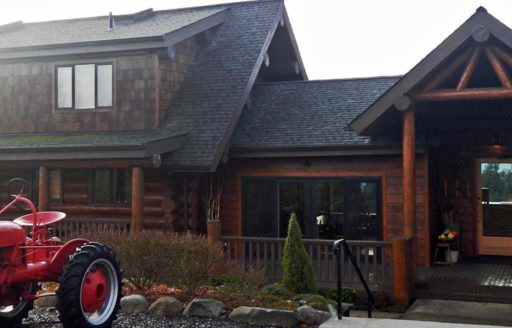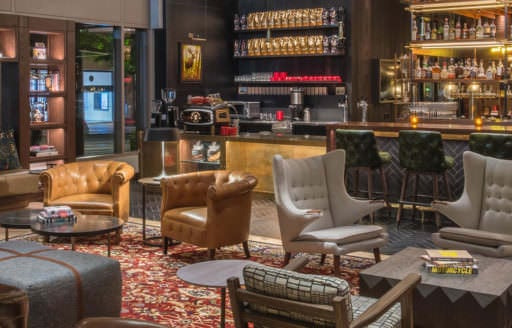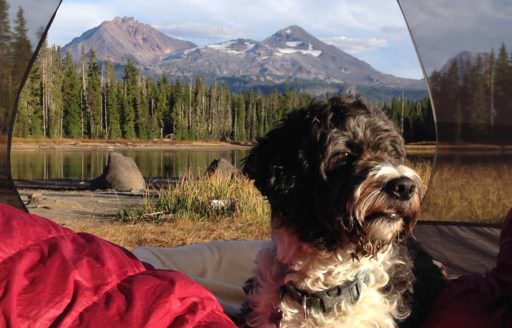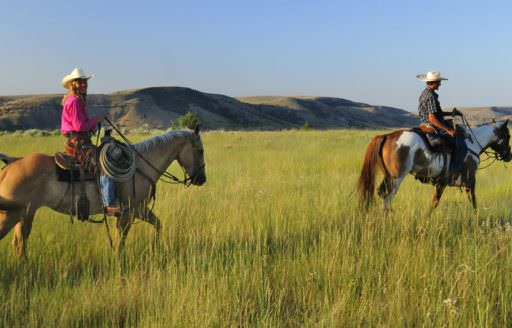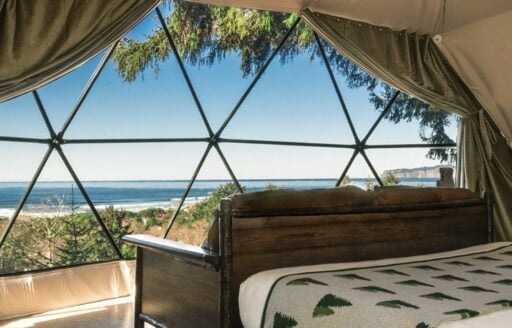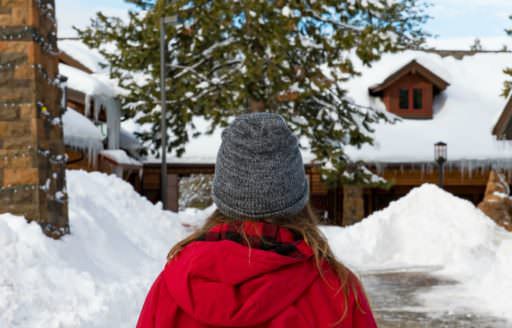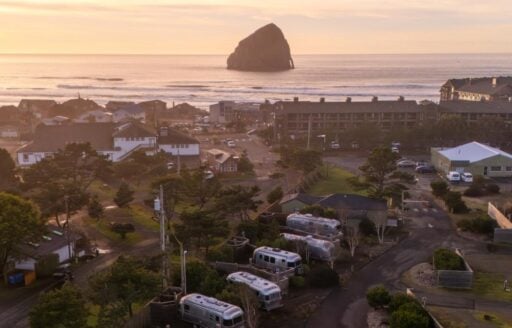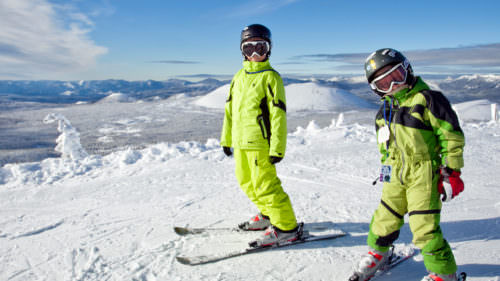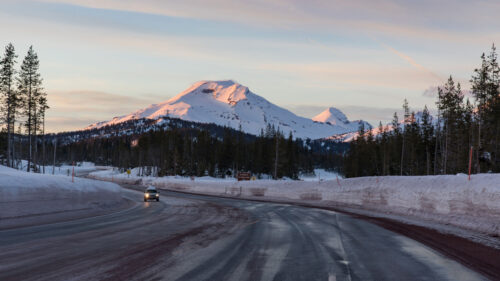A rushing waterfall, turquoise-hued water, intriguing ice formations and a crackling stone fireplace — you’ll find it all at Multnomah Falls in winter. Just 30 miles from Portland, Multnomah Falls is the tallest waterfall in Oregon, plunging 620 feet. As the most visited recreation site in Oregon, it’s a busy spot in spring, summer and fall.
According to Nathaniel Brodie, trails manager for the Columbia River Gorge National Scenic Area, winter may be the best time to come for those who are hardy and prepared to make the trip. The water flow increases with the rain, and icicles appear on the cliffs surrounding the falls, making for a dramatic winter-wonderland sight. Here’s how to experience the magic of Multnomah Falls in winter.
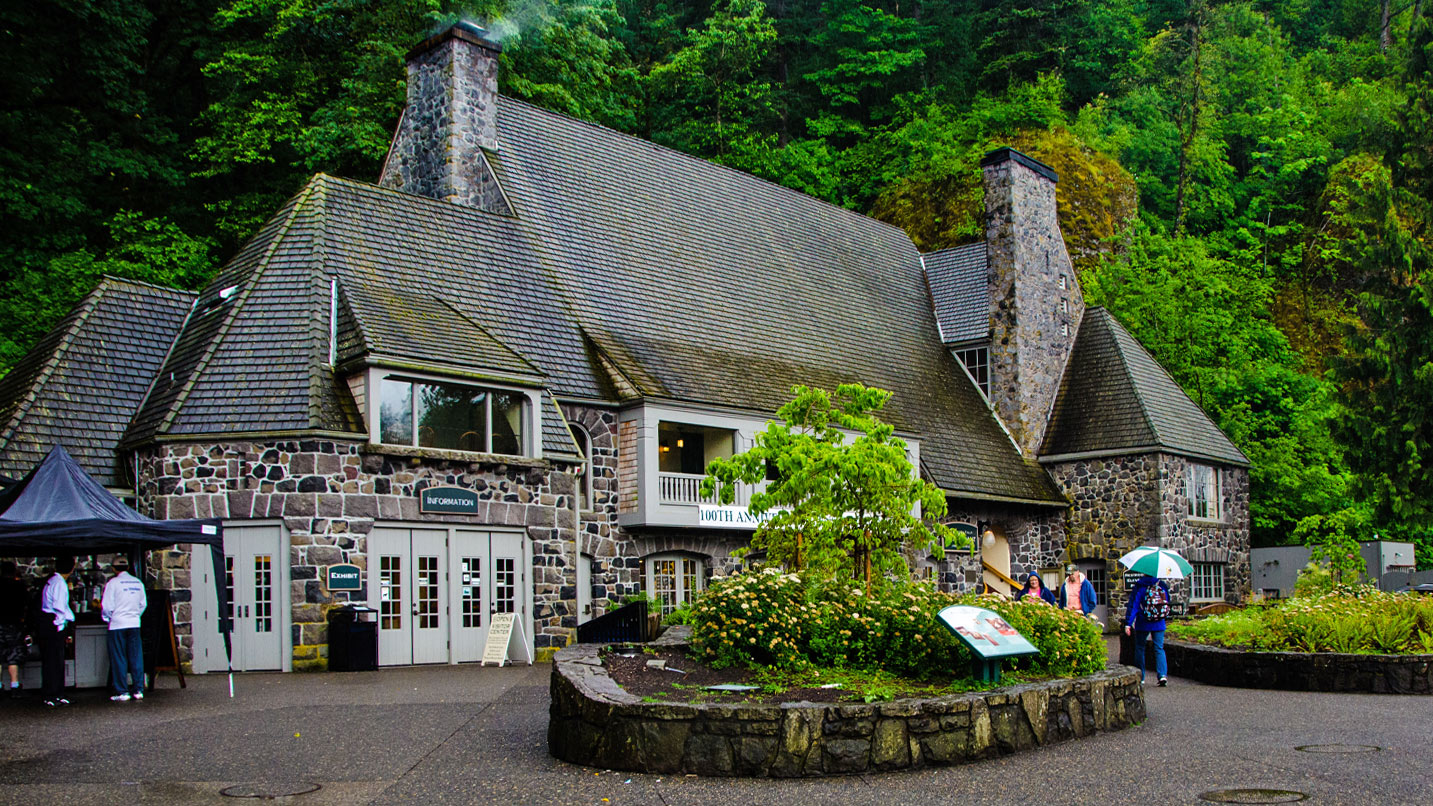
How To Get To The Falls
There are several different ways to enjoy Multnomah Falls, including trails and two viewpoints accessed by paved paths. The lower viewpoint is most accessible and includes a ramp, but the uphill but paved path to Benson Bridge has a short set of stairs. You’ll find a dramatic view of the twin tiers, sometimes bedecked with snow-covered branches, icicles and the rugged rock face as a backdrop for it all. Trails for more skilled hikers provide close-up views of the falls; they can be slippery in winter, so use caution.
For free parking, use exit 31 off of I-84. You can also choose to go car-free (a great idea to avoid driving in winter conditions) on the Columbia Gorge Express bus, which runs from Hood River to Portland and back, with stops along the way in Gresham, Troutdale and Cascade Locks. From the I-84 parking lot, take the paved walkway under the overpass by the creek and use the Historic Columbia River Highway crosswalk.
Note that the Historic Highway just west of Multnomah Falls is scheduled to be closed through late May 2025 to repair the west viaduct, or elevated roadway. There will be no access to Multnomah Falls by vehicles traveling eastbound on the Historic Highway during this time, but the falls and lodge will remain open.
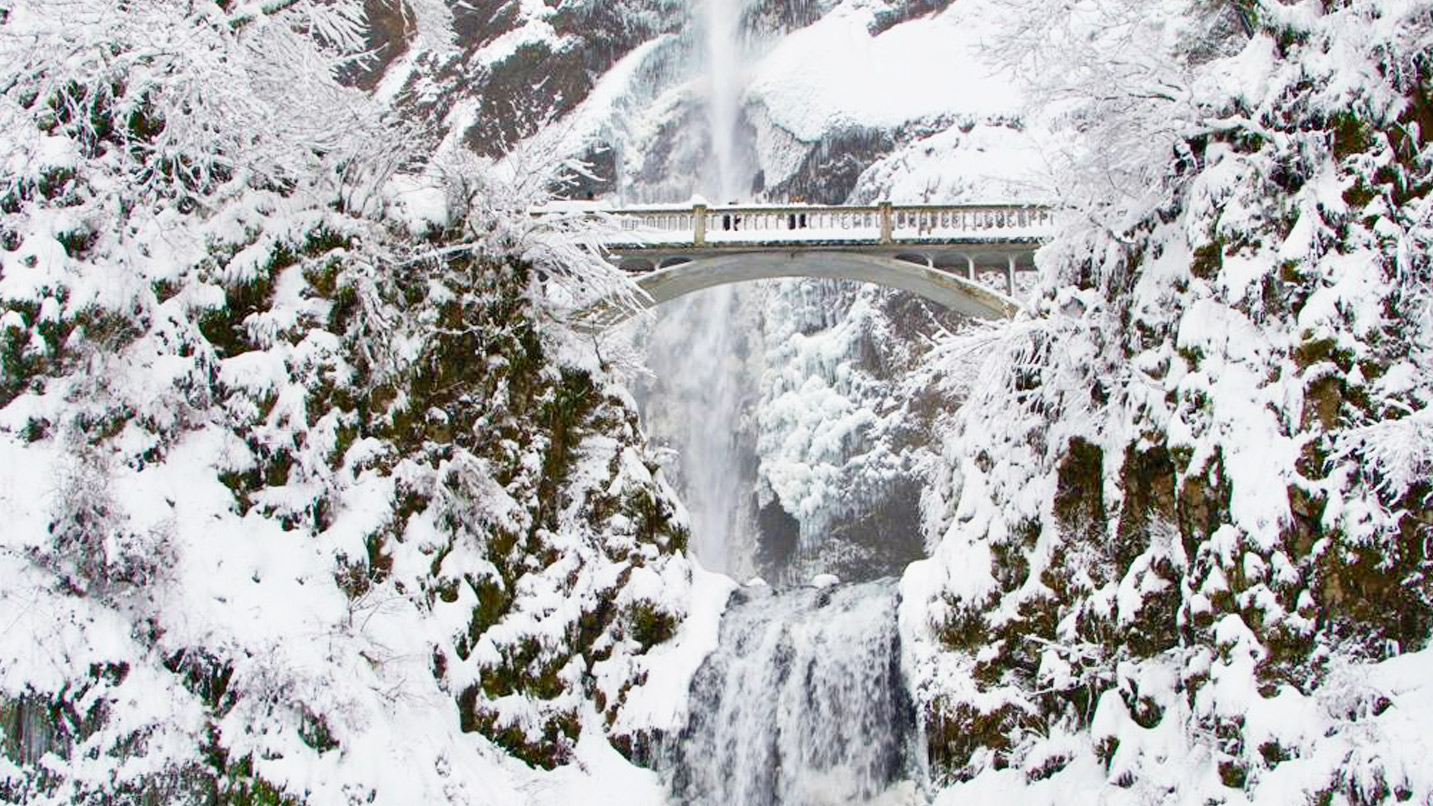
Winter Tips for Advanced Hikers
Want to get a closer look at the frosty waterfall with icy fringes set against evergreen moss? With proper gear and experience, you can choose to walk up to the Benson Bridge, which earns you a view of the upper tier of the falls. For more sights, continue up the trail with high-level views of the Columbia River Gorge along with a forested path to the upper viewing deck.
The trail to the top of Multnomah Falls is just over 1 mile. With 600 feet of elevation gain across 11 switchbacks, it’s a steep climb made even trickier in winter. At the upper deck, you’ll see where Multnomah Creek begins to plunge down and create the falls. “Though the trail is paved, it should be considered a difficult, backcountry hike,” says Brodie. “One should be prepared for slippery and inclement conditions.”
The trail is generally unmaintained in the winter months, so hikers may encounter a variety of conditions including rain, mist, ice, hardened and steeply inclined snowpack, rock slides and windfallen trees. “Sturdy boots, gloves and rain gear are a must,” says Brodie. “Microspikes [and hiking poles] are very useful if one expects to encounter any sort of ice or hardened snowpack on the trail.”
For experienced hikers, make use of the trail for a longer hike — a 4.6-mile round-trip trek with 1,700 feet of elevation gain. The full loop climbs to the top of Multnomah Falls and continues on to Dutchman Falls, Wiesendanger Falls and Ecola Falls. It ends at Wahkeena Falls to the west of Multnomah before directing you on a side trail back to the lodge. Keep in mind that the upper parts of this trail were affected by the 2017 Eagle Creek Fire, and burned trees can come down in winter storms. “It is highly advised not to hike through the burn scar in high winds,” says Brodie.
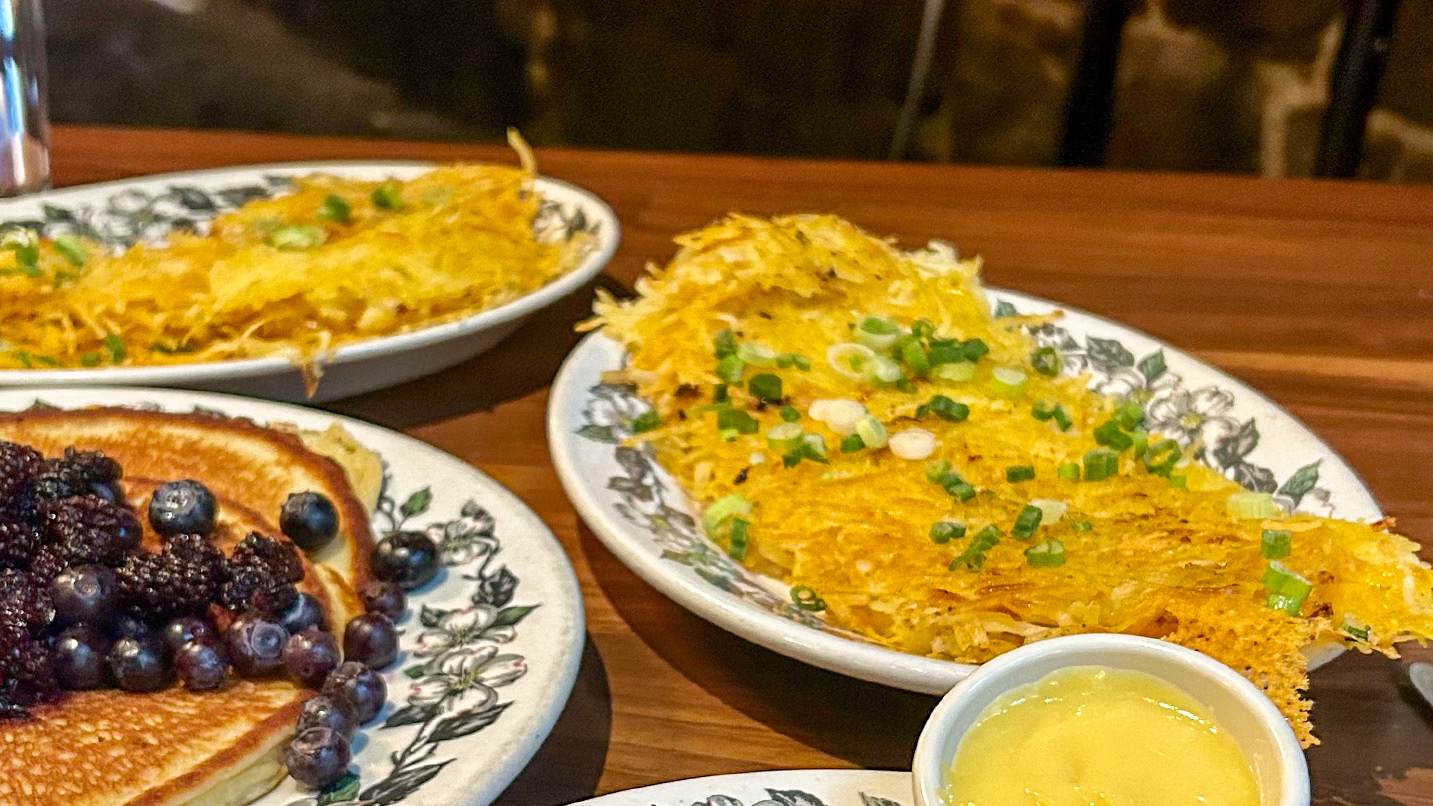
Warm Up With Cozy Cuisine and Cocktails
After experiencing the falls, take the stairs or elevator up to the Multnomah Falls Lodge Restaurant located inside the lodge. Completed in 1925, the historic lodge dining space hosts plenty of seating, including the glass-enclosed atrium room with a view of the falls and a crackling wood fireplace built with stones sourced from the Columbia River Gorge.
On the menu? A hearty breakfast with Oregon showcased front and center. The hazelnut-crusted French toast with Oregon marionberries is a can’t-miss dish. The restaurant also serves lunch and dinner, with a focus on burgers, pastas and salad — be sure to sample the homemade honey-wheat bread. If it’s open (hours vary based on the flow of business), the Trailside Bar inside the lodge is another excellent spot to pull up a seat and share your waterfall photos over a cocktail.



